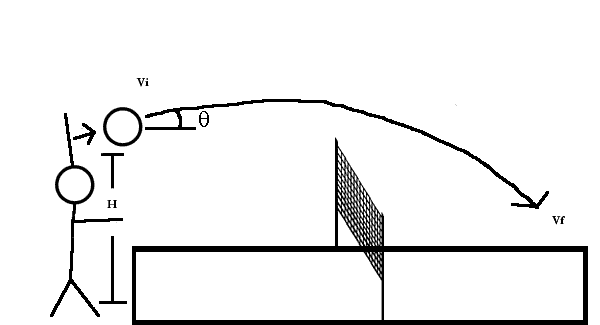Overhand
|
The overhand serve is the most used
in higher level sporting events and, if used correctly will have a greater
speed and less hang time then the underhand serve. However since the
overhand serve allows a player to serve much harder, it has a much smaller
room for error and is thus a more difficult shot.
|
 |
Image located at http://www.stjohntheevangelist.net/Athletics.htm

The same laws govern the physics of an overhand shot that govern the underhand serve. The main difference being that the value H of height is going from about 4 feet waist level, to above the head at 7-8 feet. A regulation volleyball net is 10 feet high. So most players will still have to hit the ball up some small amount.
Because the serve starts so much higher than the floor the final velocity of the ball is noticeably faster than the initial velocity. This is due to the acceleration due to gravity. Also because the angle is less steep the ball can be hit much faster and still drop enough to hit the floor in bounds.
As far as real numbers go, for an overhand serve the launch angle of your hand will be about between 3-10 degrees. This number is based on a 6 foot tall volleyball player.
Serves